Quick Airline Information:
✈Airline IATA* code: AR
✈Airline ICAO* code: ARG ✈Founded: 14 May 1949 ✈Website: www.aerolineas.com.ar✈Alliance: Sky Team
✈History
✈Operations (Destinations)✈Fleet✈Photo Slide 📷✈Airline reviews ⭐
*IATA: (International Air Transport Association)
*ICAO: (International Civil Aviation Organization)
History Menu:
Aerolíneas Argentinas is the flagship airline of Argentina, with its hub in Buenos Aires. Despite its size and strategic location the airline's financial performance has been less than bright. Decades of economic crisis and an extended, painful privatisation have left the carrier struggling for survival till practically disappearing.
The history of the airline began in 1929, when Compagnie Générale Aéropostale (Aéropostale) started airmail operations between Buenos Aires and Asunción using Laté-25 equipment, later expanding its network to cities located in the Patagonia. After Aéropostale's Argentine subsidiary Aeroposta Argentina was formed. In 1947, this airline became a mixed-stock company in which the Government had a 20% stake.
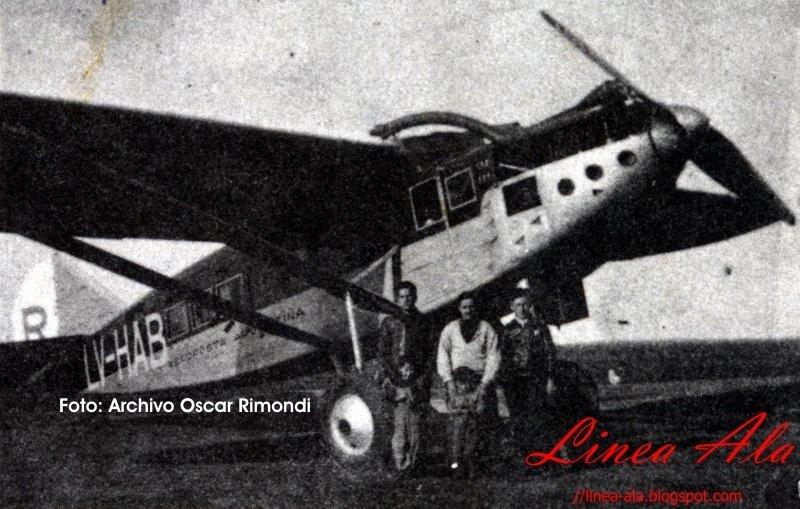
As Aeroposta expanded its network southwards and incorporated the Douglas DC-3 into its fleet, another three mixed-stock companies were in operation at the time: ALFA (Aviación del Litoral Fluvial Argentino) mainly operated flying boats northwards to the Mesopotamia, FAMA (Flota Aérea Mercante Argentina) operated overseas services with DC-4s as its mainstay equipment, and ZONDA (Zonas Oeste y Norte de Aerolíneas Argentinas) was mainly concerned with operations in the northwest region. These carriers became unprofitable and President Juan Perónhad them amalgamated into a single state-owned company on 14 May 1949. The state holding was officially re branded as Aerolíneas Argentinas-Empresa del Estado.
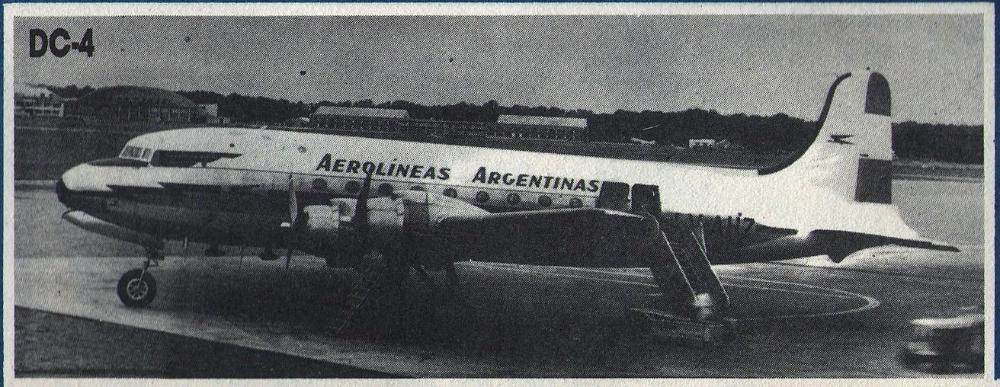
Aerolíneas Argentinas started operations on its own on 7 December 1950. It's fleet consisted of five new Convairs and Douglas DC-6. Soon afterwards, Douglas DC-4s joined the fleet and services were inaugurated to Santiago de Chile, Lima, Santa Cruz, and São Paulo. On 8 February 1957, it was reported that Aerolíneas Argentinas had ordered ten F-27 Friendships. The Comet had begun commercial jet services in the 1950s, becoming the first overseas airline in ordering the type.
The 1960s saw the carrier ordering the Avro 748 turboprop airliner. The aircraft started services on 15 February 1962 between Buenos Aires and Punta del Este. The first flight for the Caravelle in Aerolíneas colours was Buenos Aires–Santiago de Chile on 1 April 1962. In 1966, loans granted by the Ex-Im Bank and Boeing permitted the purchase of a number of Boeing 707-320Bs By March 1970, Aerolíneas Argentinas had a fleet of six Boeing 707s that served routes to Europe and the United States, whereas six Boeing 737-200s were on order.
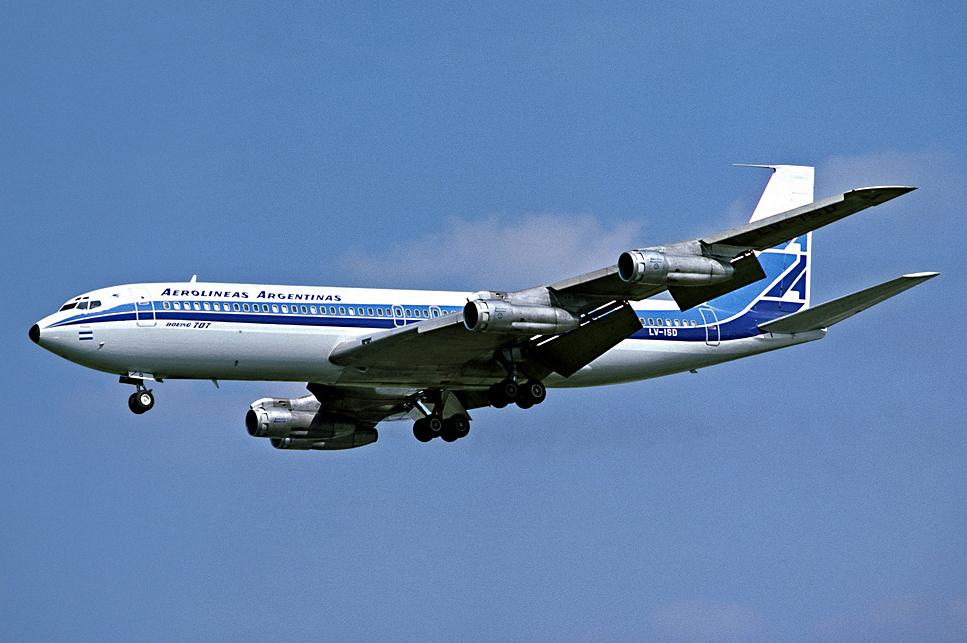
During the 1970's the fleet saw the arrival of three different aircraft types the B727, the B737 and the B747. The incorporation of the Fokker F-28 into the fleet in the mid-1970s prompted the withdrawal of the last HS-748s, making the company to be the first South American airline in operating an all-jet aircraft park. Another milestone for the company took place in June 1980 with the first south polar scheduled service, linking Buenos Aires with Hong Kong via Auckland. Late that year, a second-hand Boeing 747SP was acquired from Braniff.
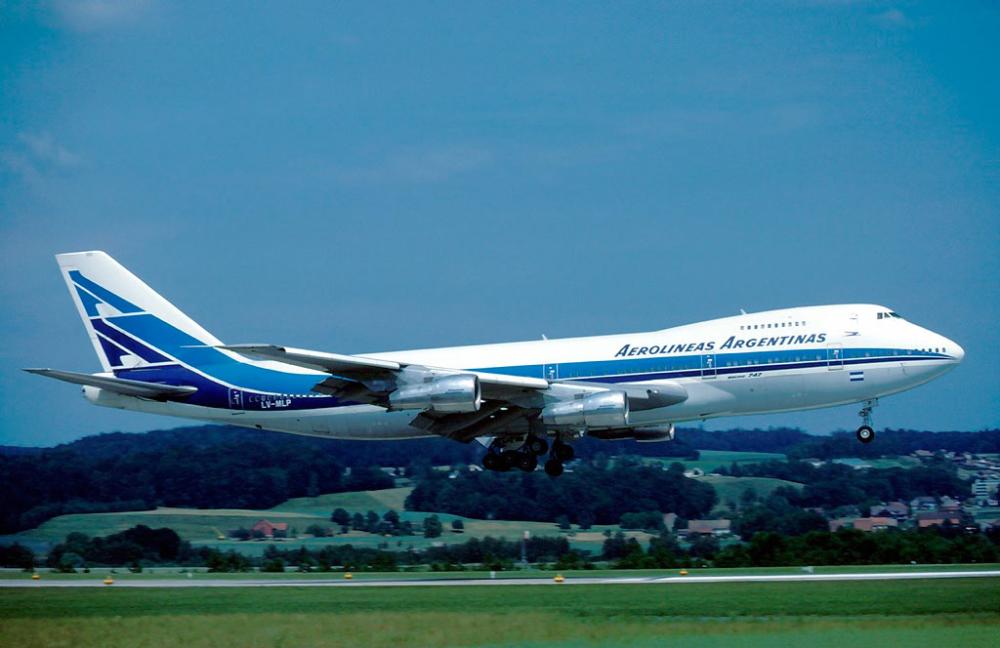
The airline was assigned by law the monopoly of international operations from Argentina in 1971. The same law also assigned Aerolíneas Argentinas a 50% of the domestic market share. Following the acquisition of Austral by the Argentine government in 1980, both Aerolíneas Argentinas and Austral became government-owned, to the extent that some routes were simultaneously operated.
Unfortunately for Aerolineas, the company's was in poor financial health, losing $10 million a month in 1990. A consortium led by Spain's carrier Iberia made a bid in June 1990, Iberia would control 30 percent; three Spanish banks another 19 percent; Argentinian investors 36 percent; employees ten percent; and the government, five percent. resulting in 51 percent Argentine ownership. As costly as it proved to Iberia, AR still controlled one-third of South America's air traffic.
Austral's owner Cielos del Sur S.A. was sold to Iberia in March 1991, further increasing the Spanish flag carrier's stake in the Argentine air market. Aerolíneas Argentinas and Austral never merged throughout the private era, and remained as separate companies with the same shareholder. Iberia subsequently boosted its stake in the airline to 85% in April 1994. At this stage the Argentine Government resigned to the voting privilege it had in the Directory of the airline, Iberia was subsequently obliged by the European Commission to cut its stake in Aerolíneas Argentinas. In July 1997, Iberia cut again its stake in Aerolíneas Argentinas from 20% to 10%, while American Airlines's parent company AMR acquired a 10% stake of Aerolineas Argentinas/Austral's in 1998. It started reducing the number of aircraft types though it ordered a dozen Airbus A340s, a type new to Latin America, for its long-haul needs.
Losses had mounted to US$927 million since 1992, totalling US$150 million only for 1999. The restructuring plan presented by AMR, was rejected by the SEPI, the other Spanish shareholder. Furthermore, given that the AMR Corporation did not find purchasers for the company, the SEPI put the control of the airline back into Spanish hands. The vacancy left in the management positions that followed the departure of the AMR holding from Aerolíneas was soon filled in by the SEPI.
Allegations of corruption were made on the basis of the price paid by Iberia and the Spanish firm's ulterior conduct. Subsequent management by American Airlines and SEPI drove Aerolíneas Argentinas into an almost terminal crisis in 2001. In June 2001, the airline filed for bankruptcy protection from creditors, and went into administration; the salaries were paid by the Argentine Government, instead of using money coming from the SEPI. Most of the fleet was grounded, and only 30% and 10% of domestic and international flights, respectively, were operating. Flights to Auckland, Los Angeles, Miami, New York, São Paulo, Sydney and Rio de Janeiro were halted, the suspension of the daily flight to Madrid, which also served Rome was the last connection with Europe.
Then a breath of fresh air came from Marsans group who acquired a 92% stake through its subsidiary Air Comet with the intention of resuming short as well as long–haul services. In May 2008, the Argentine Government took the airline back into state control in July 2008 after acquiring 99.4% of the stake for an undisclosed price. In November 2011,the government announced an austerity plan for the company in order to reduce the deficit it has been incurring since being taken over from Marsans.
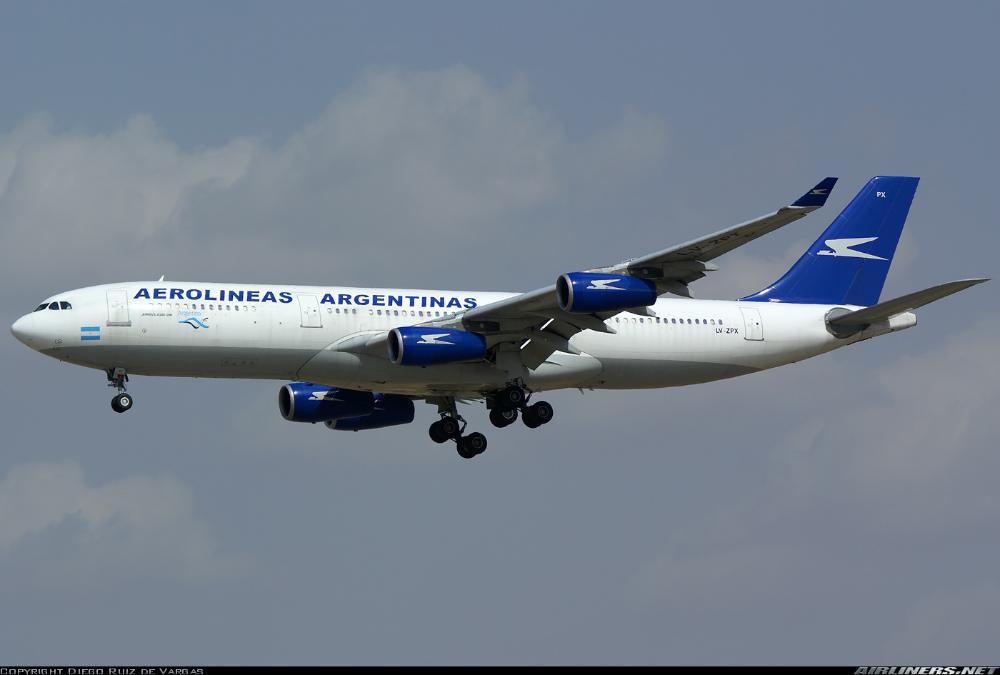
Aerolíneas Argentinas began to modernise its fleet in 2009, when it agreed to lease ten Boeing 737-700s and to purchase two more as a replacement for the ageing Boeing 737-200s and MD-80s. In November, the Boeing 737-200 made its last flight on a scheduled Buenos Aires–Catamarca–La Rioja–Buenos Aires passenger service.
It had been announced in October 2009 that the carrier was looking for about six Boeing 737-800 aircraft. As of November 2012, the airline was considering both the Airbus A350-900 and the Boeing 787-9 as replacement aircraft for the Boeing 747-400 and the A340. However it was opted for the incorporation of leased Airbus A330-200s in 2013 for serving routes to Bogotá, Cancún, Caracas and Miami and eventually Europe as well.
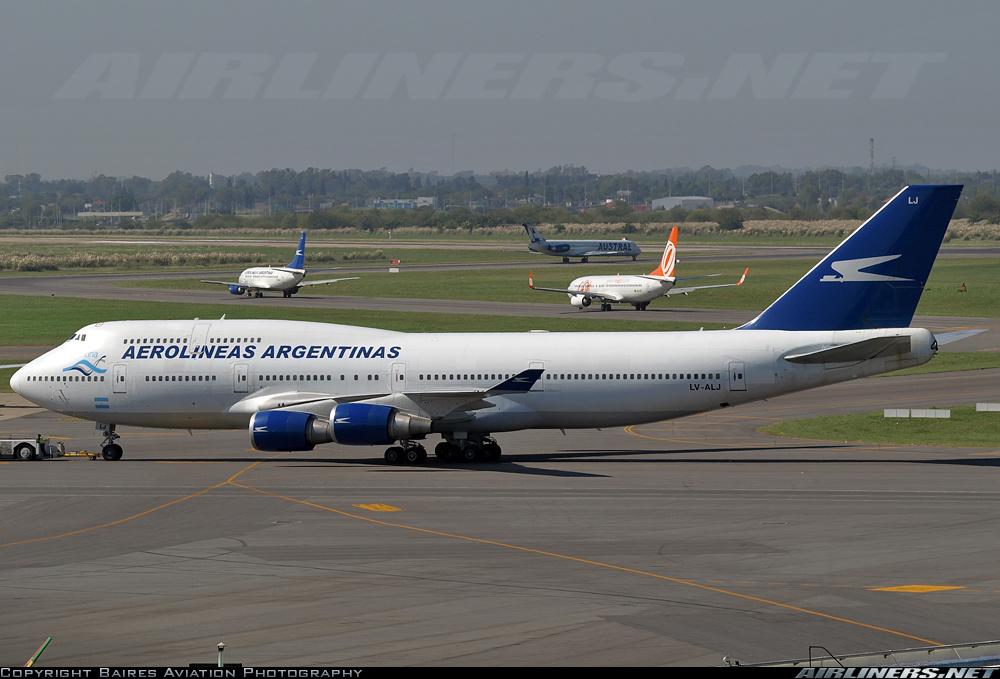
In April 2013, Air Lease Corporation announced the lease of six Boeing 737-800s to the company. Aerolíneas Argentinas signed in November 2013 memorandum of understanding with Airbus, aimed at acquiring four more A330. The first Airbus A330-200 directly purchased from Airbus was delivered in March 2015.
With its ageing long-haul fleet in need of replacement, Aerolineas CEO Mario Dell’Acqua stated in November 2017 that the company was evaluating a replacement for the Airbus A340, with a decision to be made in 2018. The company was considering either the Boeing 787 or the Airbus A350 as possible replacements, with the intention of the new fleet entering service in 2020. The Airbus A330 will also be replaced as part of the long-haul fleet replacement, In November 2017, Aerolíneas Argentinas became the first Latin American airline in taking delivery of a Boeing 737 MAX 8.
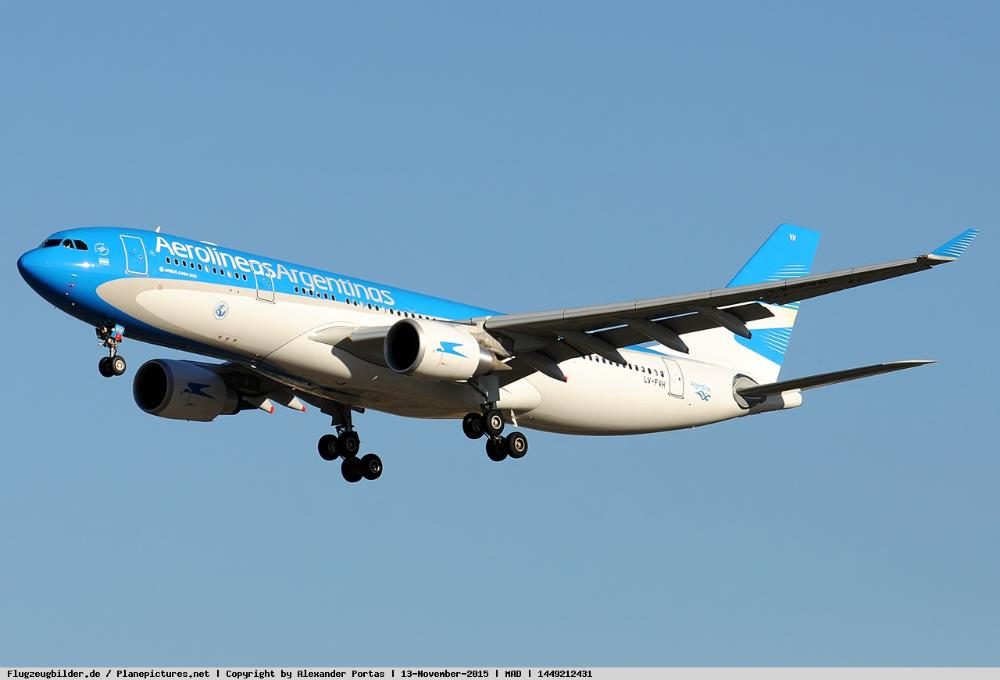
Since then the airline has been growing with good load factors, serving strong markets and making its domestic network a feeder to its long haul routes across the Pacific and the Atlantic. New aircraft like the A330 and B-737-800 Max have made the airline stand out again and it's on route to achieve profits once again after many years of losses.
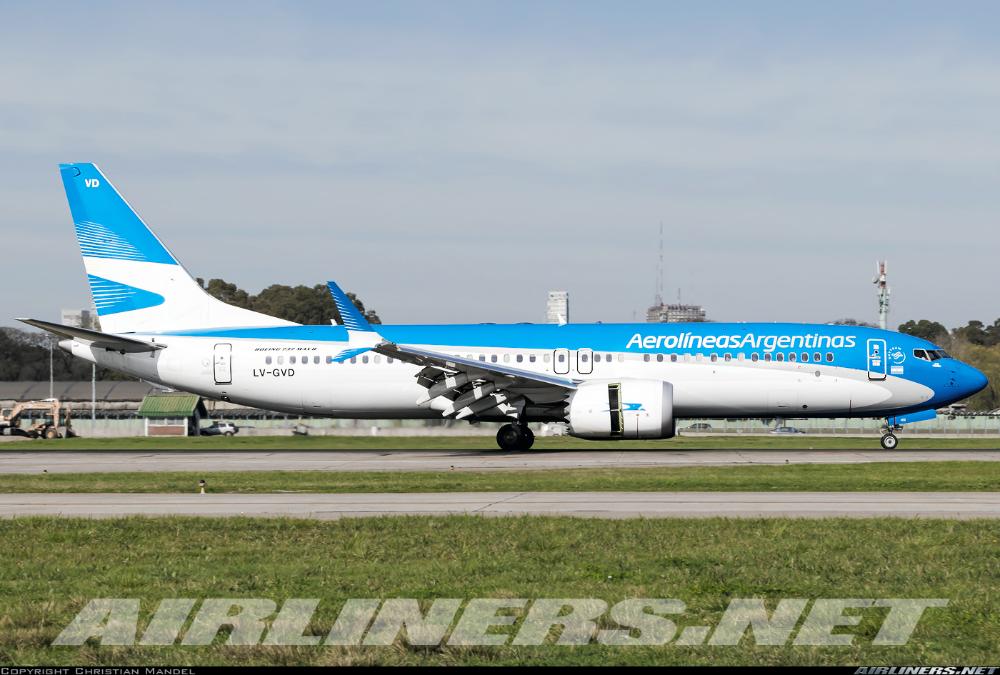
Operations and Destinations 🌍:
Aerolineas Argentinas has two major hubs, Ezeiza (EZE) where all the long haul, international and high demand domestic flights depart from; Jorge Newbery airport (AEP) is located closer to the city centre and offers Domestic destinations as well as regional routes to neighboring countries.
Below you will find the destinations* operated by the airline at the time of publishing:
| Region 🗺️ | Destinations 🌍🌎🌏 |
|---|---|
| ✈Argentina (domestic) | Bahía Blanca, Buenos Aires, Comodoro, Rivadavia, Córdoba, Corrientes, Catamarca, El Calafate, Esquel, Formosa, Iguazú, Jujuy, La Rioja, Malargüe, Mar del Plata, Mendoza, Neuquén, Paraná, Posadas, Resistencia, Río Gallegos, Río Grande, Río Hondo, Rosario, Salta, San Carlos de Bariloche, San Juan, San Luis, San Martín de los Andes, San Miguel de Tucumán, San Rafael, Santa Fe, Santa Rosa, Santiago del Estero, Ushuaia, Viedma, Trelew |
| ✈North America | New York, Miami, Orlando |
| ✈South and Central America | Asunción, Bogotá, Cancún, Curitiba, Florianópolis, Lima, Montevideo, Porto Alegre, Punta Cana, Punta del Este, Río de Janeiro, Salvador, Santa Cruz de la Sierra, Santiago, São Paulo |
| ✈Europe | Madrid, Rome |
*Destination list is for reference only. Please check directly with the airline for updates. *Note some destinations are only seasonal.*Correct info as of August 2019.
Fleet ✈️:
Aerolíneas now operate with a modern, efficient and reliable fleet. It has turned around it's fortunes by phasing out the last of older Mc Douglas MD88 in favour of brand new Embraer E190 and Boeing 737 Max for its domestic and regional routes. It also has introduced new wide bodied aircraft in the last years and improved it's entertainment systems and services.
The fleet of Aerolineas consists of:
| Network 🌐 | Aircraft ✈️ |
|---|---|
| ✈Domestic, regional flights | Embraer E190, Boeing B737-700/800/Max8 |
| ✈Medium haul (South America) | Boeing 737-800/Max8 |
| ✈Long Haul | Airbus A330, A340 |
*Correct info as of August 2019.
Aerolíneas Argentinas Photo Slide 📷:
Reviews ⭐:
 |  |
|---|---|
| ✅Best airline for flying to Argentina and domestic destinations | 👎High priced fares on international markets. |
| ✅Good timings for domestic connections at Buenos Aires (EZE) | 👎 No routes to Asia or directly to Oceania. (Sydney and Auckland served via codeshare). |
| ✅Reliable, modern and comfortable planes being used on key routes. New Boeing 737-800 and Airbus A-330 | 👎Limited routes to North America and Europe |
| ✅Good Service provided. Meals and drinks included on-board | 👎Some older A-340 aircraft don't feature individual entertainment (Economy) |
| ✅Member of Skyteam Alliance, for points/mileage redemption. | 👎No food/drink service on short domestic flights |

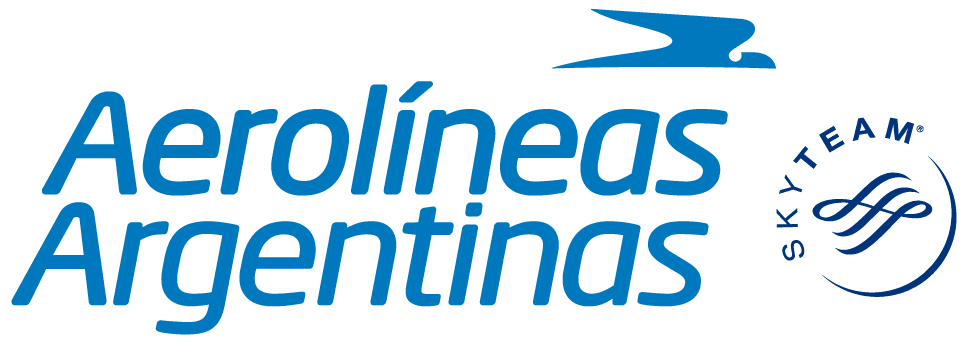












.png)